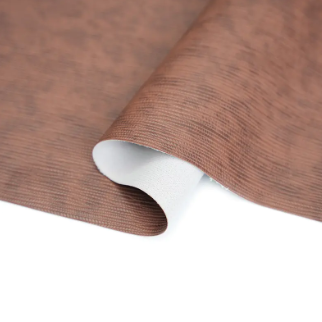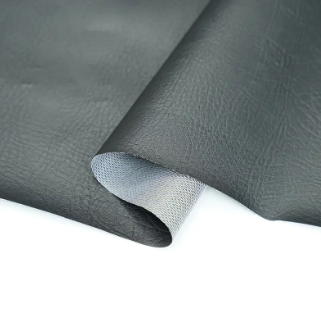1.PVC Artificial Leather Emerges as the Durable Choice for Modern Sofas
1.1 Fabric Durability Becomes a Top Priority in Contemporary Households
In today’s homes, where sofas are central to both comfort and function, fabric durability plays a critical role in long-term satisfaction. Daily activities such as lounging, entertaining guests, and the presence of pets contribute to significant wear and tear on traditional fabrics. As a result, consumers now seek materials that not only feel good but also retain appearance and performance over time.
1.2 Daily Wear and Tear Demands Resilient Upholstery Solutions
High-frequency use can quickly deteriorate conventional fabrics, causing visible signs of aging like cracks, pilling, scratches, or sagging. These issues affect not only aesthetics but also comfort. PVC Artificial Leather, engineered with high-resilience polymers, effectively withstands the stress of regular pressure and friction—delivering a longer-lasting, better-looking sofa experience for the entire household.
1.3 PVC’s Structural Integrity Extends the Lifespan of Sofas
Thanks to its synthetic construction, PVC Artificial Leather is specifically designed to resist external damage and structural degradation. Its internal composition allows it to absorb impact and stretch without tearing or deforming, ensuring the sofa maintains a sleek, firm silhouette throughout years of use. This superior endurance positions PVC as a valuable investment for families prioritizing functionality and longevity.

2.High-Strength Composition Offers Superior Resistance and Protection
2.1 Outperforms Natural Leather in Toughness and Longevity
While natural leather offers premium texture, it falls short under demanding conditions, showing scratches, wrinkles, and even cracks over time. PVC Artificial Leather, in contrast, provides reinforced tensile strength, better resistance to deformation, and greater elasticity—making it an optimal alternative for households needing robust performance without sacrificing style.
2.2 Withstands Pressure, Friction, and External Aggression
Designed to cope with the realities of modern living—ranging from active children to pet activity—PVC Artificial Leather excels in impact resistance. Its tight surface structure repels scratches and wear from sharp objects, claws, and abrasive contact, preserving the original shape and feel of the sofa across repeated daily interactions.
2.3 Maintains Structural Consistency Under Heavy Use
Unlike materials that sag, crack, or become uneven with use, PVC Artificial Leather preserves its firmness and appearance due to its built-in toughness. The material’s elasticity allows it to return to form after pressure is applied, maintaining a consistent, smooth finish even after years of heavy seating. This quality makes it highly suitable for family rooms, lounges, and hospitality spaces.

3.A Sustainable and Stylish Upholstery Option for Eco-Conscious Homes
3.1 Retains Color and Cleanliness Over Time
PVC Artificial Leather is treated to resist fading, discoloration, and surface damage. Its smooth, non-porous surface not only keeps colors vibrant but also repels dirt and grime. This makes it easier to maintain a fresh and clean sofa with minimal effort—ideal for busy families and those who want a consistently presentable living space.
3.2 Easy Maintenance with Strong Stain and Water Resistance
Traditional fabrics often require extensive care and regular cleaning. In contrast, PVC Artificial Leather’s surface can be wiped clean with a damp cloth, resisting stains from spills, dust, and pet hair. Its anti-fouling properties mean fewer worries about permanent staining or fabric fatigue, reducing the long-term maintenance cost for consumers.
3.3 Eco-Friendly Alternative Supporting Sustainable Living Goals
As more households pursue environmentally responsible lifestyles, PVC Artificial Leather offers a compelling alternative to natural leather. It is cruelty-free, avoids animal-based production processes, and can be recycled, reducing environmental impact. Its manufacturing process has also improved in recent years, making it a more sustainable material for large-scale furniture production.
